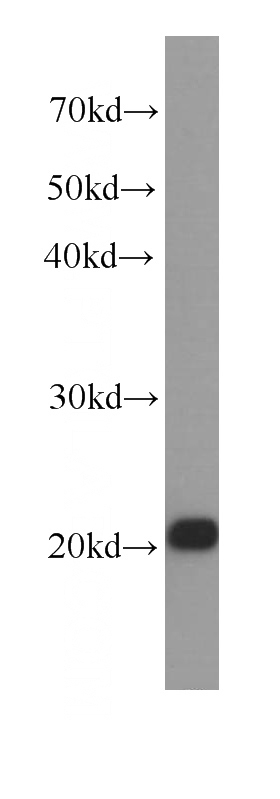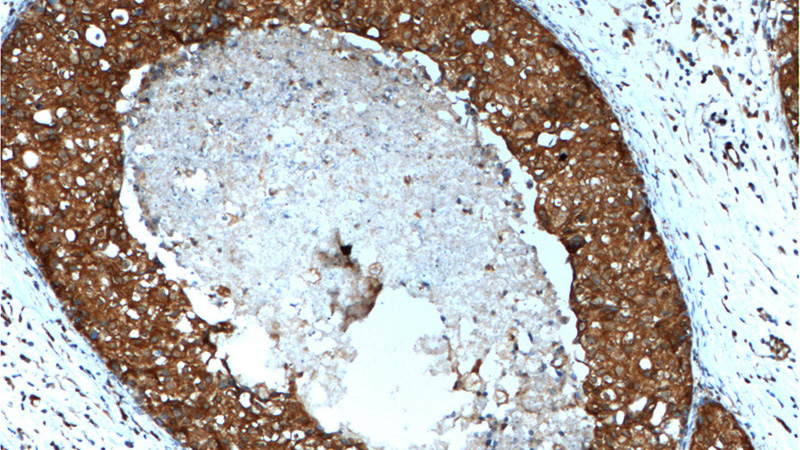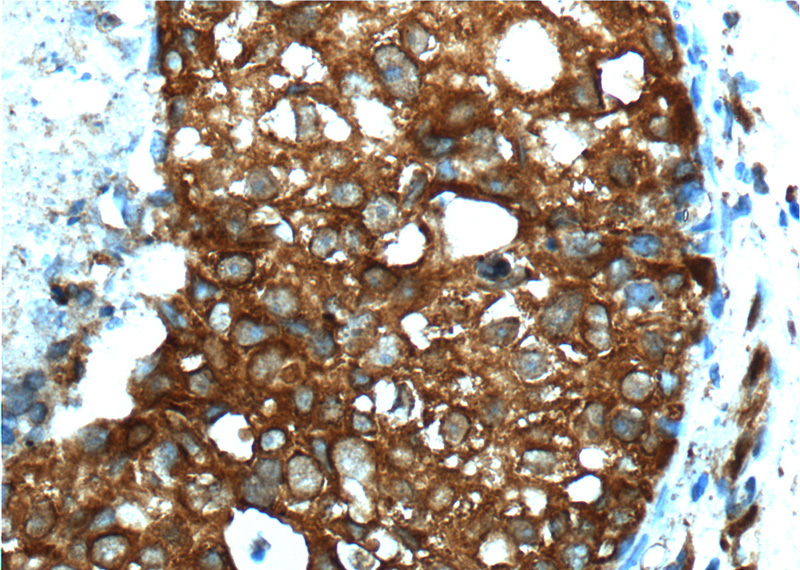-
Product Name
BAX antibody
- Documents
-
Description
BAX Mouse Monoclonal antibody. Positive IHC detected in human breast cancer tissue, human liver cancer tissue. Positive WB detected in HEK-293 cells, human testis tissue. Observed molecular weight by Western-blot: 21 kDa
-
Tested applications
ELISA, WB, IHC
-
Species reactivity
Human; other species not tested.
-
Alternative names
Apoptosis regulator BAX antibody; BAX antibody
-
Isotype
Mouse IgG2b
-
Preparation
This antibody was obtained by immunization of BAX recombinant protein (Accession Number: NM_138761). Purification method: Protein A purified.
-
Clonality
Monoclonal
-
Formulation
PBS with 0.02% sodium azide and 50% glycerol pH 7.3.
-
Storage instructions
Store at -20℃. DO NOT ALIQUOT
-
Applications
Recommended Dilution:
WB: 1:500-1:5000
IHC: 1:50-1:500
-
Validations

HEK-293 cells were subjected to SDS PAGE followed by western blot with Catalog No:107077(BAX antibody) at dilution of 1:1000

Immunohistochemistry of paraffin-embedded human breast cancer tissue slide using Catalog No:107077(BAX Antibody) at dilution of 1:200 (under 10x lens). heat mediated antigen retrieved with Tris-EDTA buffer(pH9).

Immunohistochemistry of paraffin-embedded human breast cancer tissue slide using Catalog No:107077(BAX Antibody) at dilution of 1:200 (under 40x lens). heat mediated antigen retrieved with Tris-EDTA buffer(pH9).
-
Background
BAX, also named as BCL2L4, is a pro-apoptotic member of the Bcl-2 protein family, which plays a pivotal role in controlling cell life and death. Bax largely localizes to the cytoplasm of healthy cells, but accumulates on the outer mitochondrial membrane upon apoptosis induction (PMID: 9108035). BAX can commit a cell to apoptosis by translocation from the cytosol to the mitochondria and permeabilization of the outer mitochondrial membrane, which leads to the release of cytochrome c from mitochondria (PMID: 21763611). The expression of BAX is upregulated by the tumor suppressor protein p53, and BAX has been shown to be involved in p53-mediated apoptosis (PMID: 8183579).
-
References
- Luo J, Wu N, Jiang B. Marine Bromophenol Derivative 3,4-Dibromo-5-(2-bromo-3,4-dihydroxy-6-isopropoxymethyl benzyl)benzene-1,2-diol Protects Hepatocytes from Lipid-Induced Cell Damage and Insulin Resistance via PTP1B Inhibition. Marine drugs. 13(7):4452-69. 2015.
Related Products / Services
Please note: All products are "FOR RESEARCH USE ONLY AND ARE NOT INTENDED FOR DIAGNOSTIC OR THERAPEUTIC USE"
